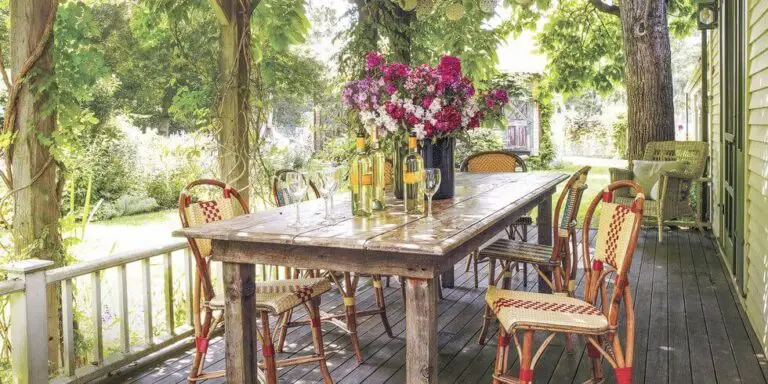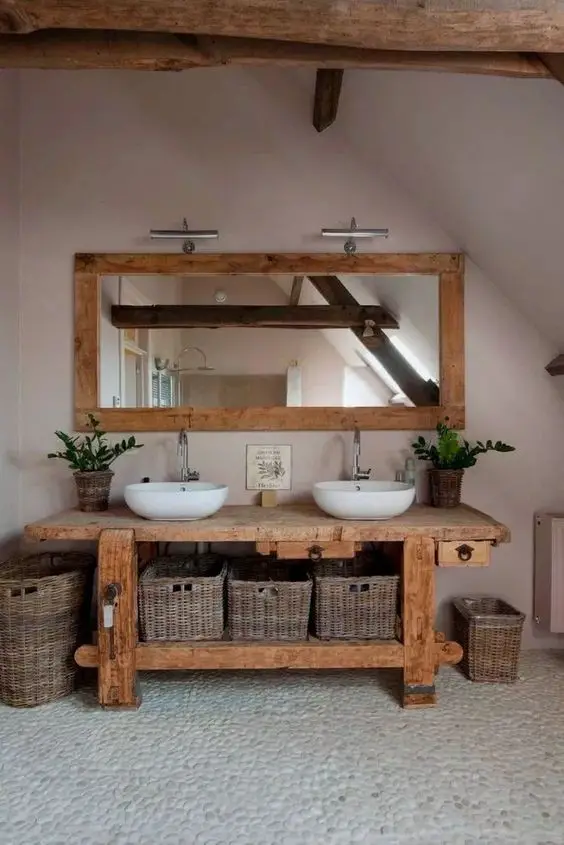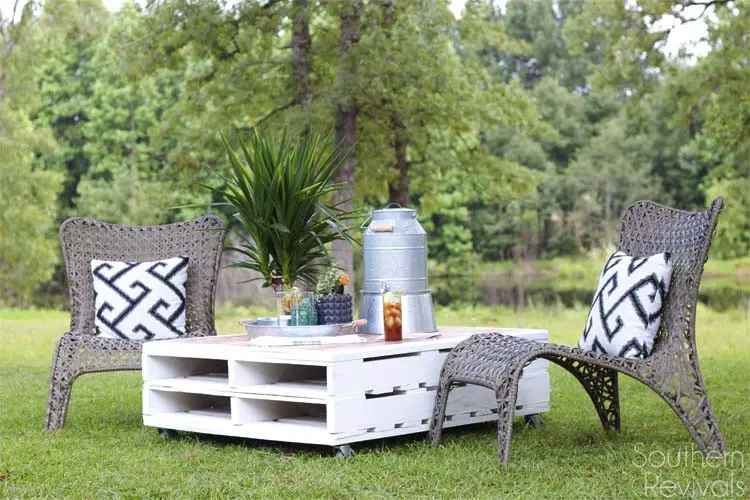What Flowers Attract Hummingbirds? (40 Best Plants)
Hummingbirds have a remarkable ability to consume nectar from up to 2,000 flowers daily due to their rapid metabolism, which requires them to eat food equivalent to half of their body weight. It’s no wonder that flower nectar is their go-to snack! To entice these birds into your garden, you’ll need to plant a diverse array of blooming perennials, annuals, and shrubs that will keep them engaged.
The shape of the flowers matters more than their color, as long as they’re easy to access for drinking. In fact, many hummingbird-friendly flowers have tubular shapes that make it simple for the birds to gather nectar. If you’re curious about which flowers are most attractive to hummingbirds, we’ve got a comprehensive list of 40 blooms that will draw these birds in.
You can consider planting petunias, bee balm, lupines, salvias, and other varieties that will provide a constant source of food for these tiny birds.
How do you choose flowers that hummingbirds like?
While it may be impractical to plant hundreds of flower species in a small yard, there are still ways to attract hummingbirds. While they have a preference for red, yellow, or orange flowers, they will also visit blooms with bright colors and tubular shapes. To further entice them, prioritize planting flowers that produce nectar, as this is their primary source of sustenance.
Additionally, selecting native flowers to your region can be beneficial, as they are familiar to the hummingbirds and can facilitate easier feeding and pollination. This approach also takes into account the local climate and weather conditions.
40 Flowers that attract hummingbirds
To create an irresistible haven for hummingbirds, selecting a diverse range of flowers is crucial. These tiny birds are drawn to vibrant colors and nectar-rich blooms. By incorporating the following top picks into your garden, you’ll be well on your way to attracting these feathered friends in no time.
Petunia
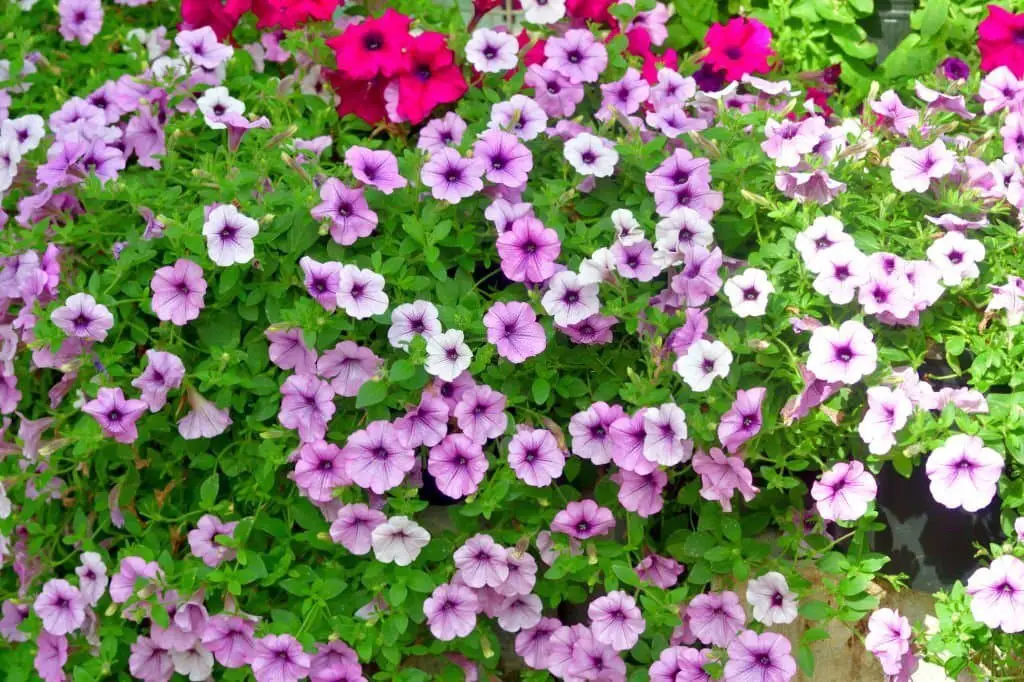
Petunias have a peculiar allure to many gardeners, who find them an excellent choice for beginners. Their versatility and ease of growth make them hard to resist. Moreover, the variety of colors and patterns available means there’s something for every taste. What’s more, petunias are prolific bloomers that can provide a constant display of color when planted in full sun.
This makes them an attractive option for gardeners looking to support local wildlife, such as hummingbirds and bees, with a reliable source of nectar.
Bee balm
Bee balm’s moniker belies its reputation as a bee-exclusive flower. In reality, this spiky beauty attracts a diverse array of pollinators, including hummingbirds and butterflies. The flowers themselves boast a vibrant palette, featuring hues of red, purple, pink, or white. They thrive in conditions ranging from partial to full sun exposure.
To encourage a prolonged blooming period that spans summer into fall, it’s essential to remove any dead or dying flowers.
This simple yet crucial step will ensure your bee balm plants remain healthy and continue to impress with their colorful displays.
Lupine
The allure of lupines lies in their vibrant, tubular blooms that burst forth in shades of purple, blue, pink, and yellow. While cultivating wild lupines can be a challenge, their hybrid cultivars prove more accommodating, thriving in zones four to eight. One of the most appealing aspects of these flowers is their early spring bloom, which coincides with the hummingbirds’ migration period when insects are still scarce.
This timing allows these tiny birds to feast on the nectar-rich blooms, a crucial source of sustenance during this critical time.
Salvia
Despite their dainty appearance, salvias are surprisingly resilient plants that can thrive in dry conditions. Their compact clusters of flowers are rich in nectar, making them a popular haunt for hummingbirds and butterflies. When it comes to growing salvias, you have the flexibility to place them in areas with partial or full sun exposure. However, by maintaining consistently moist soil, you can coax them into blooming throughout the entire summer season.
Fuschia
Fuschias bring an unmistakable charm to your garden with their whimsical, dangling flowers. Their appeal extends beyond their aesthetic value, as hummingbirds frequently visit them for sustenance. As a result, fuschias have evolved to make it easier for these birds to access their nectar-rich blooms. The versatility of fuschia varieties allows you to select from sprawling plants, compact shrubs, or trailing species that cascade down trellises or baskets.
Moreover, the flowers’ striking two-toned hues can combine to produce vibrant reds, purples, pinks, and whites, making them a coveted addition to any garden.
Zinnia
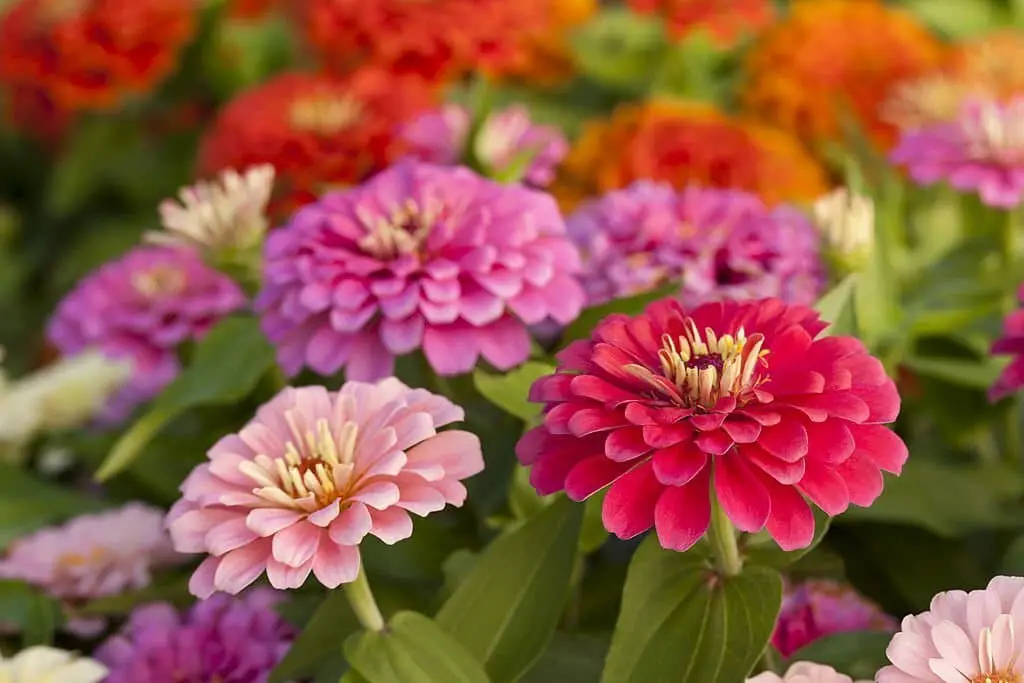
Zinnias are a hummingbird gardener’s dream come true, boasting vibrant blooms in an array of colors – except for blue and brown hues. These flowers can reach impressive heights of up to four feet, providing hummingbirds with a convenient and distraction-free nectar source. What’s more, zinnias’ unique trait is their ability to produce seeds after being visited by hummingbirds, attracting other bird species that feed on seeds to your yard.
Trumpet vine
When cultivating trumpet vines, it’s essential to provide them with ample sunlight and a sturdy surface for climbing. Their vibrant red, yellow, or orange hues are highly visible to hummingbirds, making them a popular choice for gardens. However, to keep these vigorous vines in check, regular pruning is crucial – failure to do so may result in an overgrown yard.
Wisteria
When properly maintained, wisterias can bring a touch of romance to your garden, drawing in both hummingbirds and people with their captivating beauty. The clusters of fragrant purple flowers that dangle from the plant’s stems are an irresistible attraction for hummingbirds, who can easily access the nectar. However, similar to trumpet vines, regular pruning is necessary to prevent these lovely plants from spreading too far and taking over your yard.
Azalea.
Azaleas are a type of flowering shrub that thrives in acidic soils with good drainage and partial to full sunlight. Native to Asia and North America, these beautiful plants produce vibrant blooms in shades of white, pink, purple, yellow, and red, typically in the spring season. In warmer climates, azaleas can also exhibit evergreen or deciduous growth patterns.
When selecting an azalea for your garden, it’s essential to consider not only its size but also its specific needs regarding soil and light exposure. Pruning should be done after flowering to shape the shrub or remove deadwood. Azaleas can be propagated through cuttings in the summer or autumn, making them a versatile option for gardeners.
These stunning plants can be used to create a kaleidoscope of color in your garden by planting them along walkways, around ponds, and near other shrubs to add texture and interest. When planted in containers, azaleas require sufficient space for their roots to spread out and regular fertilization. To thrive, they also need protection from extreme temperatures and a layer of mulch around the base to retain moisture.
With proper care, azaleas can provide breathtaking displays of blooms for many years.
Beardtongue

Beardtongue, a genus of flowering plants native to North America, is distinguished by its vibrant, tubular blooms and distinctive, hairy foliage. These versatile plants thrive in diverse environments, from arid deserts to humid woodlands, and exhibit varying sizes and hues. With their striking appearance and low-maintenance requirements – provided they receive ample sunlight and hydration – beardtongues are an excellent addition to any garden.
While certain species can be invasive, the majority of beardtongue varieties are non-invasive and can be safely integrated into your landscape. Furthermore, these plants play a crucial ecological role by serving as a vital food source for pollinators like bees, butterflies, and hummingbirds, while their dense foliage provides shelter for insects and small mammals. Additionally, the roots of beardtongues help maintain soil health by preventing erosion and absorbing excess water.
Blazing Star
Blazing Star is a striking perennial wildflower that boasts vibrant scarlet blooms, often drawing in hummingbirds with its nectar-rich flowers. The plant’s distinguishing features include densely clustered red or pink star-shaped petals and slender foliage. As its name suggests, this flowering beauty thrives in full sun and well-drained soils, native to the Midwest and Eastern United States, but adaptable to other regions with proper care.
When planted in a sunny spot with sufficient water, Blazing Star can produce its stunning blooms for months on end. Beyond its striking visuals, this plant also plays host to hummingbirds, attracting these tiny, fascinating birds to your backyard – an added bonus for any garden enthusiast.
Bleeding Heart
Bleeding Heart (Lamprocapnos spectabilis) is a breathtaking perennial that showcases its vibrant pink and white hues throughout the warm summer months. This charming flower grows up to 2-3 feet tall, providing an ideal setting for attracting hummingbirds to your garden. Its unique, heart-shaped blooms feature delicate, drooping petals that seem to be kissed with a hint of pink, earning it its distinctive name.
A low-maintenance addition to any outdoor space, Bleeding Heart thrives in rich, organic soil and partial shade to full sun. Although it excels in cooler climates, some varieties can survive mild winters if provided with sufficient protection. To encourage repeat blooming throughout the season, simply remove spent flowers, allowing the plant to focus its energy on producing new blooms.
Butterfly Bush
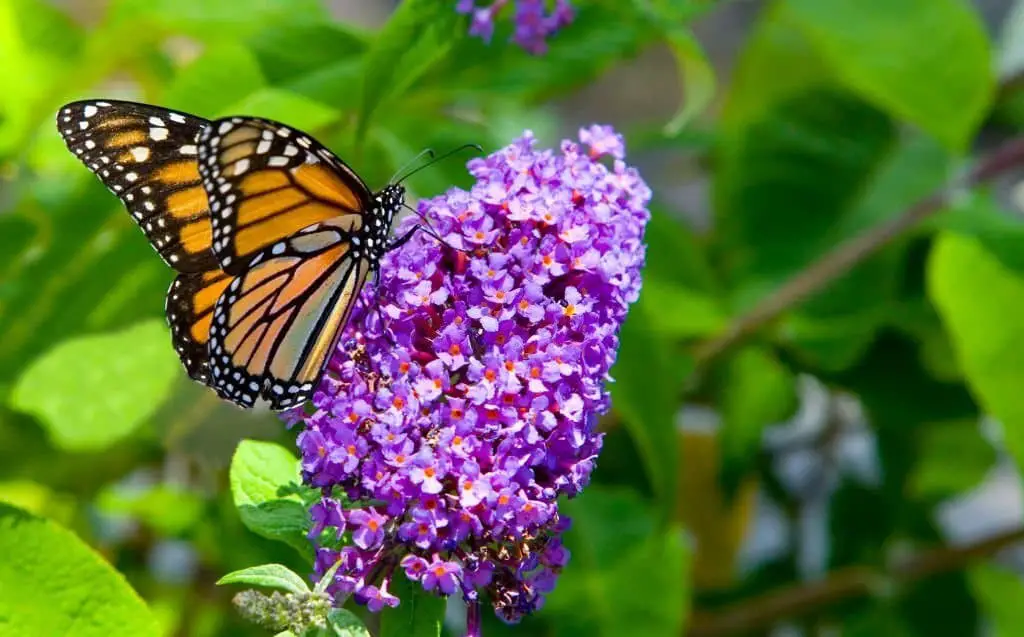
The Butterfly Bush (Buddleia davidii) is a deciduous shrub with an impressive reach, stretching up to 8-10 feet in height. Its ornamental value lies in its vibrant blooms that attract a delightful array of butterflies and hummingbirds. The plant’s long, curved branches are adorned with dark green leaves and fragrant flowers that bloom from midsummer to late fall. These colorful blooms come in an impressive palette of purple, pink, white, and yellow hues, making them a magnet for hummingbirds.
Specifically, the nectar-rich flowers with their lengthy stamens entice these birds to linger around the blooms for extended periods. When it comes to care, the Butterfly Bush is remarkably low maintenance. It thrives in full sun but can tolerate some shade. To ensure its optimal growth, plant it in well-drained soil rich in organic matter and water regularly during its first growing season. After that, prune it annually to promote new growth and encourage an abundance of flowers.
Canada Lily
In the eastern and central regions of North America, a beautiful native wildflower thrives: the Canada lily (Lilium canadense). This perennial is renowned for its showy trumpet-shaped blooms, which display a vibrant palette of pink, yellow, red, and orange hues. As a hummingbird magnet, the Canada lily’s nectar-rich flowers offer a welcoming oasis for these birds to rest and refuel. With hardiness zones 3-8, this versatile bloom can be easily incorporated into most American gardens.
However, its rapid spreading nature means occasional maintenance, such as division, may be necessary to keep it under control. Ideally, Canada lilies flourish in partial shade and well-drained soils with moderate moisture levels.
Cardinal Flower
Cardinal Flower (Lobelia cardinalis) is a perennial beauty native to North America, boasting impressive stature at 3-4 feet tall. This attractive bloom produces an abundance of red or pink flowers from mid-summer to early fall, serving as a siren call for hummingbirds. While the plant thrives in moist soils and partial shade, it displays remarkable resilience in cooler climates, tolerating full sun with ease.
As a result, Cardinal Flower has become a sought-after addition to many gardens worldwide, prized by hummingbird enthusiasts for its vibrant color, prolonged blooming period, and effortless cultivation. The flower’s tubular-shaped petals, a unique feature that provides unhindered access to nectar, further enhance its appeal, as hummingbirds can indulge in this sweet treat throughout the day and night.
Catmint
Catmint, scientifically known as Nepeta cataria, belongs to the mint family and is a perennial herb. Originating in Europe and Asia, it has successfully naturalized itself in many parts of North America. The plant’s vibrant purple-blue flowers are a major drawcard for hummingbirds, which are attracted by the nectar they contain. Not only do these blooms provide a sweet treat for the birds, but they also serve as a safe perch while feeding.
For gardeners seeking to attract these feathered friends, Catmint is an excellent choice due to its prolonged blooming period from late spring to early fall, ensuring a consistent source of sustenance throughout.
Columbine
Columbine (Aquilegia) is a globally widespread genus of perennial flowering plants that thrive in both gardens and natural environments. The diverse range of flower colors, shapes, and sizes, while unique in their characteristics, share several common traits. These tubular flowers, characterized by vibrant colors and abundant nectar production, are particularly attractive to hummingbirds.
As a result, Columbines are ideal for creating a hummingbird-friendly garden that sustains these avian visitors throughout the spring-summer blooming period. The distinctive blooms of Columbine feature five petals arranged in an open bell or chalice shape, with colors spanning from pure white to pink, purple, and yellow. Some species boast bicolored flowers, typically featuring yellow and red or orange hues.
The striking color contrast against the deep green foliage that often surrounds these blossoms makes them a show-stopping addition to any landscape. Beyond their visual appeal, Columbines are also a valuable means of attracting hummingbirds to your garden. Their tubular flowers provide an abundance of nectar, a favorite among these birds.
Delphinium
In the world of flowering plants, Delphinium stands out as a genus of around 300 species that thrive in the buttercup family. This stunning plant is renowned for its vibrant hues, lengthy blooming periods, and low-maintenance nature, making it an excellent choice for garden enthusiasts.
One of Delphinium’s most attractive features is its ability to attract hummingbirds, butterflies, and bees with its nectar-rich blooms, which come in a kaleidoscope of colors including blue, purple, pink, white, and even yellow. As these flowers bloom from early spring through summer, they can grow up to 5 feet tall, offering a dramatic display in any garden.
Not only do Delphiniums provide a burst of color and interest in the garden, but their compact shape and sturdy stems also make them ideal for use as cut flowers. To ensure optimal growth and minimize potential issues, Delphiniums require full sun to partial shade and rich, moist soil with good drainage.
While these plants are generally low-maintenance, they can be susceptible to powdery mildew and slugs, highlighting the importance of regular maintenance.
By deadheading the flowers regularly, gardeners can help keep their blooms looking beautiful and encourage repeat flowering.
Fireweed
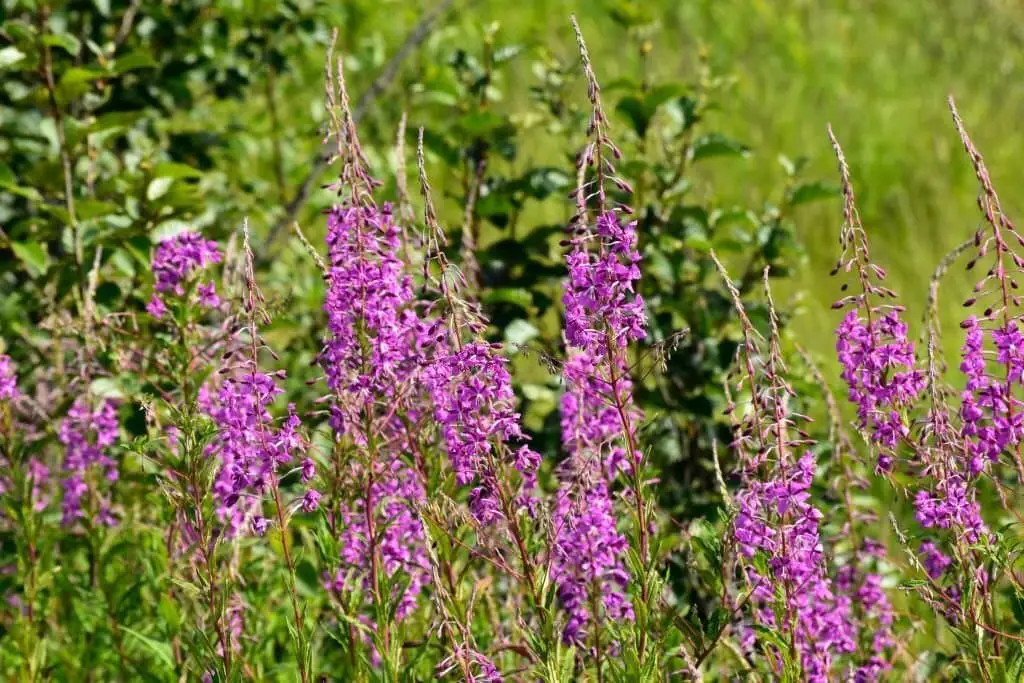
In the wilds of North America and northern Europe, a stunning and adaptable plant called Fireweed (Chamerion angustifolium) thrives in diverse environments. Its natural habitats include open fields, wetlands, roadsides, ditches, and areas disturbed by human activity. The plant’s impressive height, reaching up to 8 feet on long stems, supports its vibrant pink flowers featuring extended nectar tubes that tantalize hummingbirds.
Fireweed also plays a vital role as a host for various butterfly species, making it an attractive addition to any landscape with its showy blooms.
Flowering Currant
Flowering Currant (Ribes sanguineum) is a shrub native to western North America, capable of reaching heights of up to 6 feet. Its preferred habitats include moist areas such as creeksides and streambanks, where it can thrive in well-drained soil. As one of the earliest bloomers of the season, Flowering Currant plays a crucial role in providing energy-rich nectar for hummingbirds following their lengthy migrations.
The deep red flowers not only attract these birds but also offer an ample source of sustenance. To successfully cultivate Flowering Currant in your garden and encourage hummingbird visits, focus on selecting a sunny spot with good drainage. Once established, prune the bushes during late winter or early spring to ensure a bountiful display of blooms come summer.
It’s equally important to maintain consistent moisture levels throughout dry spells, ensuring a steady supply of nectar for the hummingbirds.
Flowering Quince
In temperate climates, the flowering quince thrives as a member of the rose family, producing dainty white or pink blossoms that effortlessly draw in hummingbirds. Beyond their aesthetic appeal, these flowers give rise to edible fruits, perfect for whipping up homemade jams and jellies. This versatile shrub can reach impressive heights of up to 10 feet tall and wide, making it an ideal choice for enhancing your home’s landscape.
Ideally, flowering quince prefers full sun to partial shade, accompanied by well-drained soil. To keep its shape in check and encourage new blooms, regular pruning is a must.
Foxglove
Foxglove (Digitalis purpurea) is a stunning wildflower that originates from Europe and Asia, boasting vibrant blooms in shades of pink, purple, and white. This captivating flower is particularly attractive to hummingbirds, which are drawn to its sweet nectar and tubular shape. Foxgloves can reach impressive heights of up to seven feet, making them an ideal choice for creating a thriving hummingbird garden.
To ensure optimal growth, foxglove prefers to be planted in the cooler temperatures of late fall or early spring, when the soil is at its most receptive. This flowering beauty thrives in moist, well-draining soil and requires at least half a day’s worth of direct sunlight to flourish. To get started, simply sow the seeds directly into your garden during the early spring season, or begin by sowing them indoors and transplanting them once they have sprouted.
Garden Phlox
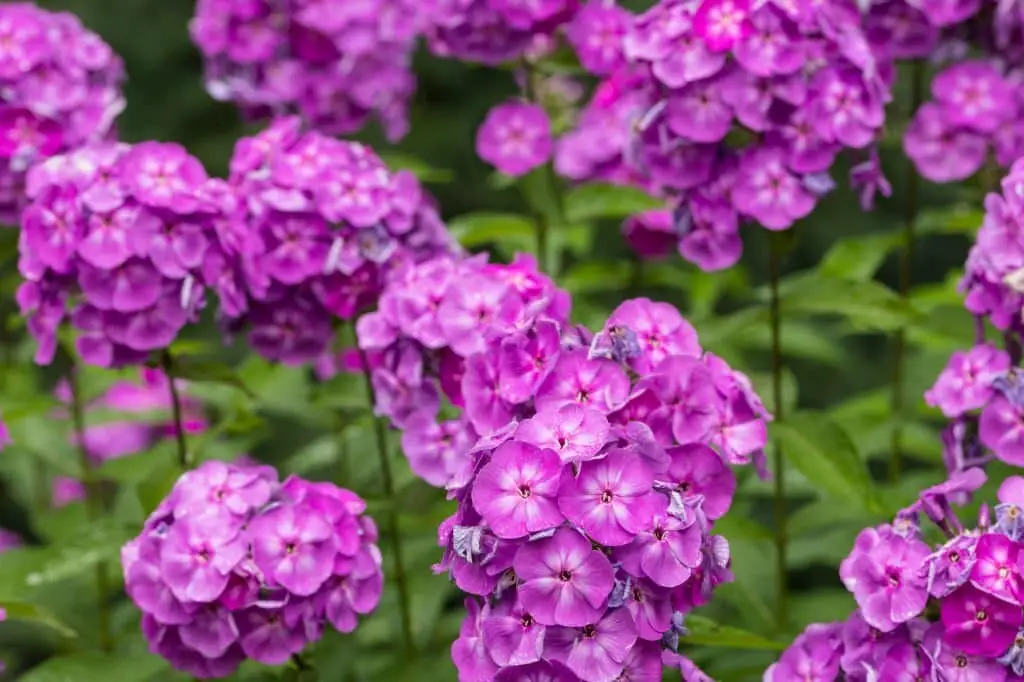
The fragrant Garden Phlox is a perennial flowering wonder that thrives during the summer months. Its clusters of star-shaped blooms, each featuring five points, are truly striking. This showy flower is a hummingbird magnet, drawing these avian visitors with its kaleidoscope of colors – pink, purple, white, and red. Not only do the vibrant petals captivate their attention, but the nectar-rich flowers also provide the necessary sustenance for their migrations.
To coax the best display from your Garden Phlox, ensure it receives full sun exposure and plant multiple specimens together to maximize its visual impact. When planting, maintain a spacing of a few feet between each phlox to allow for optimal growth. Consistent watering is equally crucial for the overall health and well-being of this lovely flower.
Hummingbird Fuchsia
Hummingbird Fuchsia, also known as Plantae Magnificantius, boasts a unique charm that draws hummingbirds to its vibrant blooms. These bell-shaped flowers display an array of pink, purple, and white hues, making them a sweet treat for these tiny birds. The plant’s colorful appearance is complemented by its nectar-rich blooms, providing an ideal food source for hummingbirds.
Native to the tropical regions of Central and South America, Hummingbird Fuchsia can thrive in other climates with proper care. As a low-maintenance plant, it typically reaches heights of two to four feet when planted in well-draining soil. Once established, it will produce an abundance of blooms throughout the summer months, filling the air with its sweet fragrance.
Indian Pink
Indian Pink, also known as Spigelia marilandica, is a vibrant perennial that draws in hummingbirds with its striking pink-red tubular flowers. This herbaceous plant thrives in moist woodlands or areas with partial sunlight, growing up to 2 feet tall. With minimal maintenance required – just regular watering and occasional re-division – it’s an excellent choice for gardeners of all levels. Its versatility allows it to be used effectively in borders, rock gardens, or as a standalone feature.
Beyond its showy blooms, Indian Pink also boasts glossy green leaves and small fruits that provide a welcome snack for birds and mammals. Notably, this plant is deer resistant, making it an attractive option for rural gardeners who often contend with these herbivores. Its lengthy blooming season, spanning from summer to fall, ensures an eye-catching display that will be the envy of your neighbors.
Lungwort
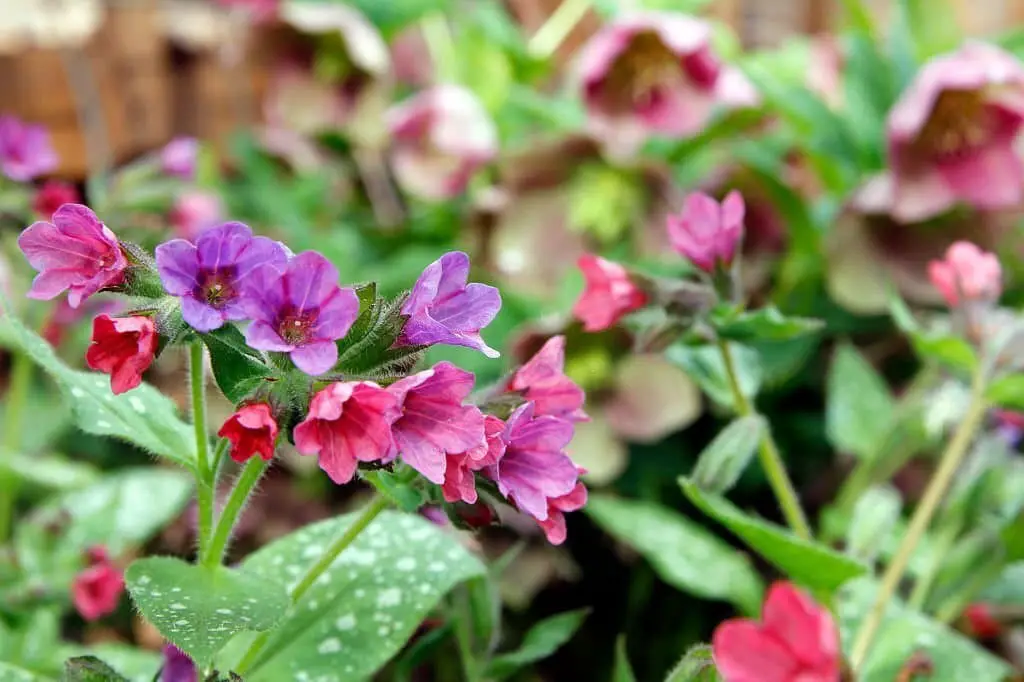
Lungwort (Pulmonaria officinalis) is a spring-blooming gem that steals the show with its intricately speckled, star-shaped flowers. The delicate hues of pink, blue, and white create a breathtaking display that’s sure to delight. But what makes Lungwort a hummingbird hotspot? It’s all about the sweet nectar produced by the plant’s showy blooms, which are perfectly suited for sipping.
The tubular shape of the flowers also provides an ideal perch for these tiny birds as they flit from bloom to bloom. If you’re eager to grow your own Lungwort, start by planting seeds in early spring in a spot that receives plenty of sunlight or partial shade. Make sure the soil is moist and weed-free, then water generously to get things off to a great start. As summer rolls around, add a light layer of mulch to help retain moisture.
With proper care, Lungwort will reward you with blooms from late winter through early spring, and can even be propagated by division during the summer months.
Mango Tango
In the lush tropics, a stunning flower called Mango Tango flourishes, drawing in hummingbirds from afar with its irresistible charm. The petals of this vibrant bloom display a mesmerizing combination of bright orange or yellow hues, overlaid with deep pinks and purples. As mid-summer gives way to early fall, the Mango Tango puts on a dazzling display, standing out against the garden’s backdrop with its bold coloring. Its sweet nectar and striking colors are the keys to its hummingbird allure.
But that’s not all – this hardy plant is also a low-maintenance delight, requiring only minimal watering and pruning to thrive. As such, it makes for an excellent choice for any garden or backyard seeking to entice these tiny, iridescent visitors.
Mexican Cigar Plant
The Mexican Cigar Plant (Cuphea ignea) is a vibrant flowering shrub that draws in hummingbirds with its radiant red, orange, and yellow blooms. To thrive, this plant requires full sun and moist, well-drained soil. Regular pruning is also essential to prevent stems from becoming too long and sprawling.
When it comes to planting, the ideal time is during spring or early summer when temperatures are warmer and frost risk has diminished.
In zones 8-11, Mexican Cigar Plants can be a hardy perennial, retaining their foliage year-round. In other regions, they serve as an annual addition to gardens.
Oregon Grape
Oregon Grape (Mahonia aquifolium) is a resilient, evergreen shrub native to western North America. Its glossy green leaves and vibrant yellow flowers make it an attractive addition to any garden. Not only does this plant draw in hummingbirds with its bright blooms, but also bees, butterflies, and other pollinators are attracted to the nectar-rich flowers. Furthermore, the Oregon Grape provides shelter for birds and small wildlife, creating a haven for these creatures.
The fruits of the shrub are edible, though they can be quite tart – perfect for adding to jams and jellies or salads for an extra burst of flavor. Moreover, the leaves possess medicinal properties, making them suitable for brewing tea or tinctures. This versatile plant is sure to bring a pop of color and functionality to any outdoor space.
Pride of Madeira
Pride of Madeira is a species of evergreen shrub renowned for its stunning presence in the island of Madeira and the Canary Islands. For centuries, it has been cultivated as an ornamental plant, prized for its extraordinary beauty. The shrub’s most striking feature is its vibrant blue blooms that emit a sweet fragrance, attracting hummingbirds with their irresistible allure. The star-shaped flowers are truly unique among flowering plants, setting them apart from others in terms of visual appeal.
While the bushes themselves can reach an impressive height of up to 10 feet, they require surprisingly little maintenance, making them an ideal choice for landscaping projects. To ensure optimal growth and flourishing, it’s essential to select a spot that receives full sun and has well-drained soil.
Purple Rhododendron
A Rhododendron flower is a stunning addition to any garden, and its unique characteristics make it a favorite among hummingbirds. The tubular shape of the deep purple blooms is especially appealing to these birds, drawing them in for a sweet treat. In terms of growing conditions, this plant thrives in temperate climates with moderate temperatures and ample rainfall.
Its preferences for cooler and wetter environments make it an excellent choice for gardeners living in areas with such weather patterns.
Red Columbine
The captivating Red Columbine flower is renowned for its ability to attract hummingbirds. Its striking blooms feature five delicate petals in a vibrant display of red and yellow hues, reaching up to two feet in height. This statuesque addition to any garden adds a touch of drama and elegance. This hardy, low-maintenance perennial can thrive in a wide range of climates across North America. While it thrives in full sun, it is also adaptable to partial shade conditions.
Furthermore, Red Columbines are versatile enough to grow well in both dry and moist soils, making them an excellent choice for gardeners with varying environmental conditions.
Red Hot Poker
In the heart of South Africa, you’ll find the striking Red Hot Poker plant, also known by its common name – torch lily. Its showstopping flowers, boasting vibrant shades of red, orange, and yellow, make it an irresistible magnet for hummingbirds.
The plant’s slender stems are adorned with clusters of tubular blooms that typically thrive from summer to fall.
With a preference for basking in full sunlight and a need for well-draining soil alongside occasional watering, Red Hot Pokers are often employed as border plants or cleverly grouped together to create a dramatic display.
Rose of Sharon
Rose of Sharon (Hibiscus syriacus) is an ornamental staple in Eastern and Western gardens for centuries, cherished not only for its beauty but also for its ability to attract hummingbirds. Its deciduous nature allows it to thrive in USDA hardiness zones 5 to 9, boasting a relatively low maintenance profile. The shrub’s upright habit typically reaches heights of 3 to 8 feet tall, with an average height of 5-6 feet and width of 4-5 feet.
Rose of Sharon’s preferences are straightforward: it flourishes in full sun to partial shade and can adapt to various soil types. Its mid-summer to fall blooming period is a treat, featuring large, trumpet-shaped flowers in shades of white, pink, and lavender that perfectly mimic the shape hummingbirds crave.
Sunflower
Native to North America, Helianthus annuus, commonly known as Sunflowers, is an annual plant belonging to the Asteraceae family. One of its most striking features is the large, radiant yellow heads comprising numerous flowers, making them a sought-after ornamental addition for gardens. But what’s more fascinating is that these sun-kissed blooms are also a magnet for hummingbirds.
The tubular-shaped petals of the Sunflower are specifically designed to allow these tiny birds to easily access and savor the nectar-rich flowers, earning Sunflowers a reputation as one of the top nectar sources for hummingbirds.
Tiger Lily
Native to the regions of Japan, Korea, and parts of China, Tiger Lily (Lilium lancifolium) is a species of flowering plant belonging to the Liliaceae family. While its natural habitat lies in these geographical areas, it has become widely cultivated across the globe. Characterized by its ability to thrive in moist soils, this species produces elongated stems that support vibrant orange-red flowers with prominent yellow stamens, adding a pop of color and beauty to any landscape.
Trumpet Creeper
The Trumpet Creeper, a woody vine native to many parts of the United States, stands out for its vibrant flowers that attract hummingbirds and other pollinators in droves. The tubular blooms come in a striking range of red, orange, and yellow hues, making them a magnet for these tiny birds. When it comes to growing conditions, Trumpet Creeper thrives in full sun and rich soil with good drainage.
However, its tendency to spread and become invasive over time means it’s crucial to check local regulations before planting and consider regular pruning to keep the vine under control.
Trumpet Honeysuckle
Trumpet Honeysuckle, a vibrant flowering vine, boasts a remarkable ability to stretch up to 10 feet in length, offering a stunning display of bright red and yellow tubular blooms that tantalize hummingbirds. This popular choice among gardeners not only attracts these charming birds but also provides a reliable source of sustenance throughout the spring and summer months. The plant’s hardiness allows it to thrive in almost any climate, making it an effortless addition to your outdoor space.
Additionally, trumpet honeysuckle is relatively low maintenance, requiring minimal pruning or trimming efforts, making it an ideal selection for busy gardeners.
Weigela
Weigela, a flowering shrub originating from East Asia, can grow up to 8 feet in height, with a range of between 3 and 8 feet. Its clusters of bell-shaped flowers come in hues of pink, white, red, or lavender, making them a stunning addition to any garden. The vibrant blooms also serve as a magnet for hummingbirds, drawing these majestic creatures in. For gardeners seeking to attract these birds, Weigela is an excellent choice.
Yellow Bells
This deciduous shrub can grow up to 6 feet tall, showcasing its vibrant yellow bell-shaped flowers with orange anthers throughout spring and summer. These blooms typically persist for several weeks, making it a fantastic choice for attracting hummingbirds. The plant’s foliage consists of large, deep green leaves that are oval or round in shape. Following the flowers, attractive seed pods emerge and open in the fall, providing winter interest.
Yellow Bell is also surprisingly drought-tolerant once established, thriving in full sun to partial shade with moderate watering.
Related Posts
When it comes to running a farm business, the right equipment can be the difference between success and struggle. But with so many options available, how do you choose the best gear for your needs? Similarly, when hiring services like driveway sealers or flower delivery companies, understanding gratuity etiquette is crucial to avoid any awkwardness. On the other hand, if you’re looking to turn a passion into a career, landscape architecture and design can be rewarding paths.
In this context, it’s essential to understand what it takes to become a successful landscape architect or designer.



